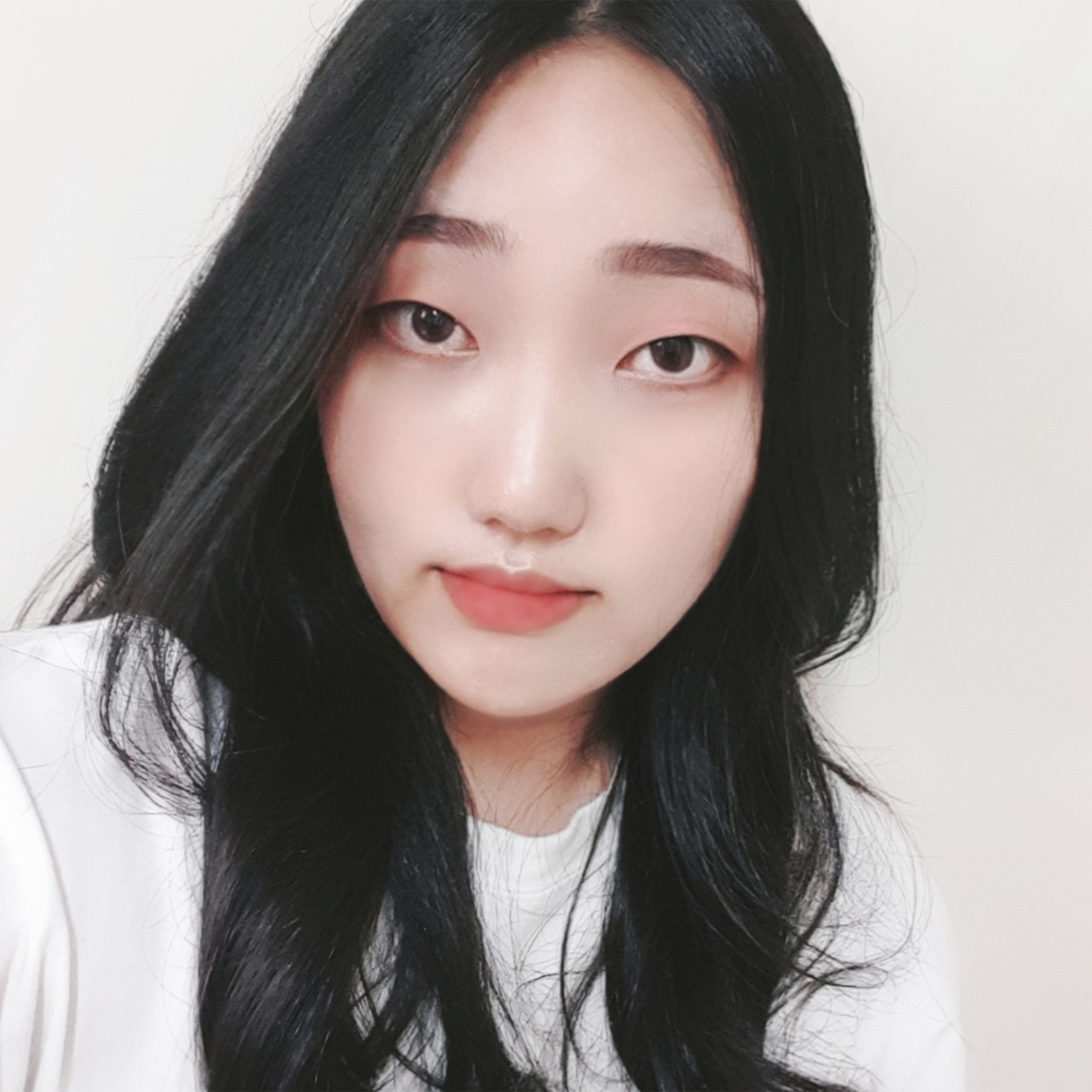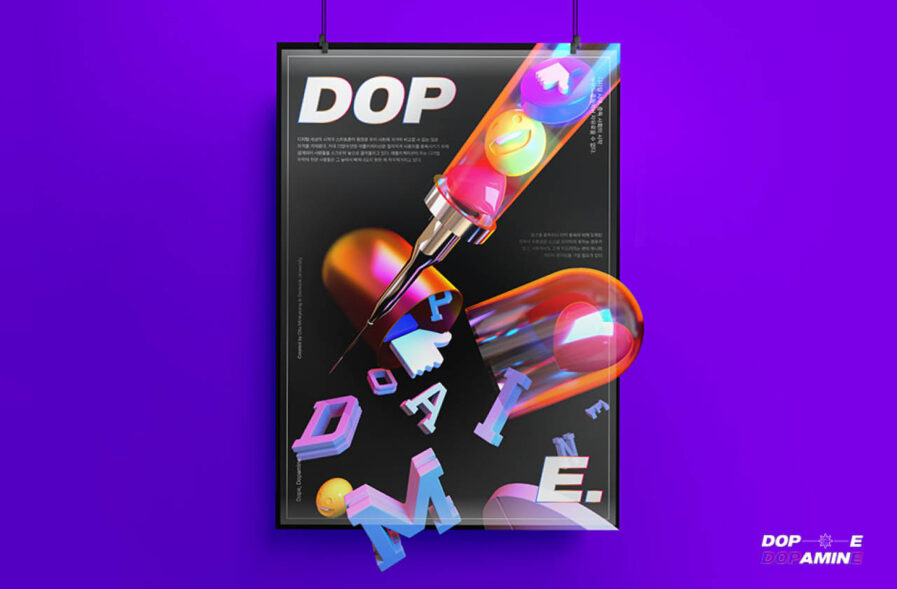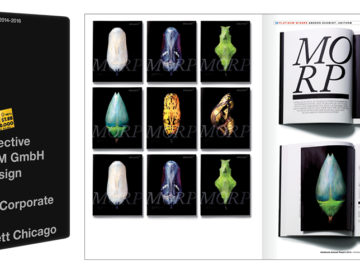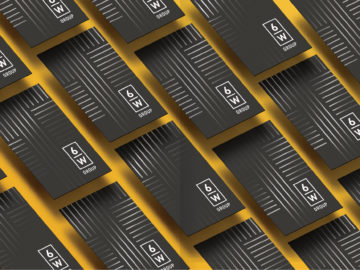In a time where our thumbs do all the thinking, Minkyeong Cho’s “Dope, Dopamine” takes a hard look at the swipe culture that’s got us all hooked. This Gold-winning project from Dankook University isn’t just about scrolling through the latest YouTube Shorts or Instagram Reels—it’s a deep dive into the dopamine-driven addiction we can’t seem to shake. Minkyeong brilliantly illustrates the fine line between digital pleasure and real-world consequences by turning likes and thumbs-up into new-age syringes and slot machines. This wake-up call, wrapped in vibrant colors and clever design, urges us to pause, reflect, and reclaim our time from the endless scroll.
By: Minkyeong Cho, Student, Dankook University
Most of us have probably experienced watching YouTube Shorts at least once. Once you start watching, you might find yourself endlessly scrolling without even realizing it. With just the simple act of swiping with your thumb, Google’s algorithm keeps offering content that might interest you. Similarly, when you explore the Instagram Explore tab, it suggests a variety of posts based on your interests. These contents are highly engaging, stimulating, and even free! To enjoy this endless array of content, we only have to move a single finger.

“Dope, Dopamine” is a project designed to analyze and raise awareness about the addictive nature of short-form videos like YouTube Shorts or Instagram Reels, as well as other smartphone applications, including SNS, that are gaining popularity.
This project was my graduation work. While preparing for my graduation exhibition and contemplating a topic, I realized I was spending a significant amount of my break time watching YouTube Shorts—perhaps excessively! What started as a way to pass the time quickly became hours of endless scrolling. Sensing a problem, I discussed this issue with my friends.

I discovered that my family and friends also frequently had similar experiences. Further research through the internet and related books revealed the dopamine release and addictive nature of smartphones, which have become an integral part of our daily lives. I designed this project with the hope that others would become aware of this issue and take time to reflect on it.
In South Korea, the term’ dopamine addiction’ has spread like a meme. People often joke about themselves, saying things like, ‘Oh, I’m addicted to dopamine,’ when they notice they are constantly seeking pleasure. This casual use of the term meant that neither I nor the people around me took it seriously. However, ‘dopamine addiction’ not only applies to SNS and short-form videos but also to addictions like alcohol, drugs, and gambling. Therefore, I aimed to raise awareness about the dangers of application addiction by comparing it to more commonly acknowledged addictions like drugs and gambling.

In my poster, I used syringes, pills, and slot machines for graphic elements. Instead of using drugs and numbers, I used emojis like ‘Likes’ and ‘Thumbs Up’ to represent elements related to applications. To illustrate the endless scrolling nature of applications, I utilized a horizontal binding format, mimicking the elongated screen of a smartphone.
I showcased the completed project at my graduation exhibition. Besides posters and booklets, I created a self-assessment checklist for dopamine addiction, which was available at the booth for visitors to evaluate their smartphone usage habits and reflect on the risks of dopamine addiction. The posters delivered a strong message about application addiction, further emphasized through motion posters to capture people’s attention. Additionally, the booklets provided analysis of popular applications and offered advice on overcoming addiction. The exhibition was a success. Visitors were drawn to the vibrant colors of the posters and publications, and many appreciated the opportunity to reflect on their smartphone usage habits using the checklist.

It is significant that I received the New Talent Awards from Graphis with my successfully completed graduation project. While preparing for my graduation work, I primarily considered a South Korean audience. However, submitting my work for the New Talent Awards allowed me to expand my perspective by ensuring the project resonated with people from different language backgrounds. I also conducted additional research and made adjustments to ensure the topic was universally relatable and understandable.
I would like to encourage fellow creators to share and discuss ideas with those around them. Great ideas can often arise from paying attention to what might seem insignificant and taking the time to deliberate and discuss them with others. Hearing diverse opinions during my project preparation helped me broaden my perspective.

In an era where smartphones are an integral part of our lives and video content dominates, my project’s theme might seem contrary to the current trends. However, my message is not that short-form content and applications are inherently bad but rather that we need to be aware of their benefits and potential downsides, especially regarding their addictive nature. By being conscious of these aspects, we can make better choices and enjoy our time more wisely.

Hello, my name is Min-kyung Cho. I live in South Korea and major in communication design at Dankook University. When preparing for the “Dope, Dopamine” project, my goal was to raise awareness and encourage people to reflect on dopamine addiction. I’m thrilled to have won the New Talent Awards and to have the opportunity to share my thoughts and experiences expressed through this project.






